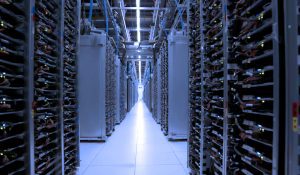I had the opportunity last month to speak to the Global Operations team of a large colocation provider regarding Schneider’s view of technical innovation inside the cloud and service provider space, and to participate in a lively discussion regarding the trends that we are collectively seeing in the market today.
Based on this discussion, it’s more clear to me than ever that the changing needs of colocation buyers are going to continue to drive changes in the industry. To date, the industry has done a good job of responding to buyer demands, incorporating changes into their architectures to lower costs, increase safety, and drive efficiency, such as:
- Mixing redundancy levels to provide clients flexibility based on the criticality of the application
- A variety of techniques to increase design efficiency
- Increased emphasis on arc flash reduction
- Focus on integration of power monitoring with other systems to provide more visibility to themselves and to clients
It is equally clear that we have harvested the low hanging fruit in these areas. At this point, clients are expecting more but often are not willing to pay for it.
So how do colocation providers determine which trends they need to pay attention to, and which investments will be accepted by their clientele? Our conversation centered on several new technologies that have the potential to provide clear ROI for colocation providers. As these conversations often do, the discussion generated as many questions as answers. Among them:
- Distributed UPS functionality – whether we are talking about Open Compute Project (OCP) or other similar designs, there are clear advantages for the right application. How do we find these applications in order to realize efficiencies?
- IoT & digital services inside the data center – We have been talking about DCIM for years, but big data and digital services laid on top of connected physical infrastructure opens the door for a host of connected services that can dramatically lower operating costs. What will it take for the industry to begin to drink its own IoT champagne?
- Lithium ion energy storage – Again, the ROI is clear over the lifetime of the data center. But how do we as in industry convince clients that Li-ion technology is safe?
- Distributed generation and microgrids – Data centers are already, for all intents and purposes, microgrids – how do we better harness the global trend toward distributed energy production to power our data centers?
- Active Energy Management – Combining our energy supply initiatives with the processes we have in place to manage energy inside the data center can open up new revenue streams while driving efficiency and sustainability.
As I reflect on this visit and several others over three continents in the last month, I can say for certain that we are in the right Industry. We also have a huge opportunity and responsibility to shape its future.
But I’d love to hear your take – how does my list resonate with what you’re seeing? What technologies do you think colocation providers should bet on in the coming years, and why? Please let me know in the comments below.


